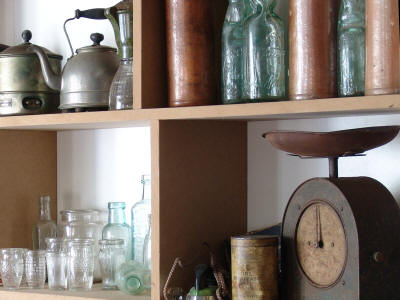5 Easy Steps to Creating a Distressed Antiqued Look

The distressed look is very popular these days, with people being drawn to the
character and personality of pieces which have had a long and active life.
However it takes years to get a piece of wood to achieve such a finish
naturally. Thatís why many people use the following paint technique to instantly
add unique age inspired touches to pieces they purchase.
Step 1: Texturing the Wood
You want to start off by scoring the wood with a nail, screw, bolts, or some
medium grade wire brush. Create marks and indentations in the surface at random,
to simulate the look of wear and tear. Try to create a subtle texture that
doesnít follow any discernable pattern, across the entire face of the piece.
Step 2: Sealing the Surface
Mix one squirt of burnt umber universal tint into some clear interior latex wood
stain. Mix them, and then apply a smooth even coat to the entire surface of the
piece. This has the effect of protecting and preparing the wood, giving it just
a hint of color while also leaving the material looking aged and weathered.
Step 3: Base Color
Once the sealer has completely dried, mix your base paint using eight parts
black, and one part water. Stir thoroughly, and then apply it to the surface of
the wood very lightly. The brush you use should only be barely grazing the wood,
with the bristles only mildly dampened by the paint. This will create a washed
out and uneven black backdrop against which you can apply more vibrant colors.
Step 4: Primary Colors
Take two separate containers. In the first mix Covington Blue paint, glaze, and
water in equal parts. In the second mix Lafayettegreen paint with equal parts
latex glaze. Apply first one, then the other, in languid, patchy strokes. You
donít necessarily want the entire surface coated, and some soft blank spots can
feature only one color, or the other. Just make sure you donít glop it on too
heavily or youíll make more work during the next step.
Step 5: Finishing
Once the paints have all dried, take some medium grade sandpaper, and lightly
remove the color anywhere that the piece would naturally be worn. This can be
anywhere that you find moving parts, pieces that touch one another, or hinged
joints. Once complete, use a medium grade wire brush to score the entire
surface, creating tiny cracks in the paint to simulate age.
This article is provided courtesy of PebbleArt and their line of Sandstone Drink Coasters which are hand crafted from real, mountain born, naturally absorbent materials. The author of the article is stone designer Joey Pebble.
|